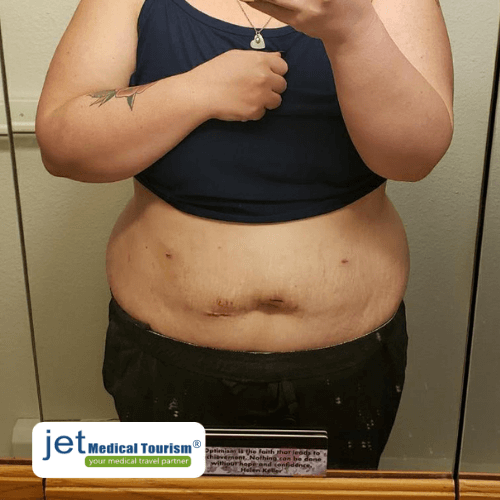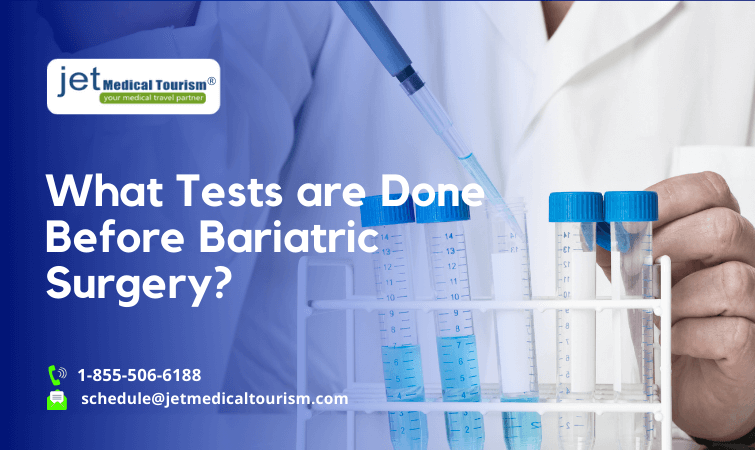Gastric Sleeve Scars – Minimize Scars to Stomach

Whether gastric sleeve scars exist after surgery is one of most common inquiries about gastric sleeve surgery. How bad are gastric sleeve surgery scars and are they permanent?
The truth is that there’s no simple answer to this. But there’s some good news: since these types of surgeries are becoming more advanced, they’re also becoming minimally invasive, which means less surgical scarring overall.
Here we’ll discuss the different types of gastric sleeve incision scars and give you some tips on how to heal these post-surgical scars after bariatric sleeve surgery.
Gastric sleeve bariatric surgery scars
Sleeve gastrectomy is a safe and effective bariatric surgery for people who want to get rid of obesity. However, it will result in sleeve surgery scars in the abdominal area. The good news is that in most cases, the post op scars are minor and will gradually become less visible. A qualified and experienced weight loss surgery specialist will be able to minimize scars appearance by placing tiny incisions in discreet locations.
Incision size and number
Laparoscopic Gastric sleeve scars are relatively minor because this procedure is performed using advanced, minimally invasive techniques. About three to five small incisions will be placed in the surgical area in the abdomen. Each incision may be only about half an inch in length, through which the laparoscope and surgical instruments are inserted.
Minimal scarring techniques
Number of incisions depends on the type of technique used to perform your VSG bariatric surgery. If you want to significantly reduce post op scar tissue, you may consider innovative techniques such as single incision laparoscopic sleeve gastrectomy. This will minimize scars because multiple incisions are not involved and just one small incision is placed across your belly button.
Does gastric sleeve leave scars?

Yes, laparoscopic gastric sleeve surgery will leave some scarring. Some small scars are unavoidable because scar tissue is body’s natural healing process to repair the wounds. Even minimally invasive single incision gastric sleeves will leave at least one scar. Your bariatric surgeon will provide detailed instructions to get these large and small scars healed safely and rapidly.
RELATED READ: Gastric Sleeve Incisions, Illustrations
How does gastric sleeve scar tissue occur?
When your dermis tissue is cut during the weight loss surgery, the WBCs will concentrate in the wound site to prevent infection. This triggers the growth of minimal scarring tissue in the wound area. New collagen fibers begin to form, which will help fill the internal wounds. If your weight loss surgeon has used dissolvable sutures, they will get naturally absorbed within a few weeks. Scab formation around the wound will eventually fall, leaving behind a scar.
Healing process
VSG surgery scars healing will occur fast, and the scar will fade significantly for most patients. Initially the scar may appear more pronounced in red or white color. People with brown skin may have scar that is lighter than their natural skin shade. However, the body’s internal repair mechanism will work to get the VSG scars healed over time. Your weight loss surgeon will guide you and share with you experiences of actual patients to help you cope with the scar concerns.
Do gastric sleeve scars go away
No, the scars will not go away completely. However, in most cases VSG scars will progressively diminish and reduce to a thin white line eventually. Skin discoloration will fade and become invisible over time unless you have had a large incision through open surgery.
VSG surgery scars may be more pronounced in patients with advanced age, high body mass index, or those who start strenuous physical activity before the incisions have healed. Laparoscopic bariatric sleeve surgery scars may be relatively more visible in the following conditions:
- Hypertrophic scarring has occurred, where the scar tissue is raised about the skin’s surface
- Scarring has spread beyond the incision edges
- Scars resulting from re-opened incisions or failure to prevent infection due to not keeping the incisions clean
- VSG surgery scars that have become thicker and discolored because of failure to avoid sun exposure during the early healing process
 Different Types of Gastric Sleeve Scars
Different Types of Gastric Sleeve Scars
The type and severity of scarring you will end up with after VSG surgery depends on the type of surgery you have. You may have a single incision, a multi-port laparoscopic, or you may have open surgery.
Single incision gastric sleeve surgery
the best case scenario as far as scarring goes is the single incision gastric sleeve (SILS) which is minimally invasive surgery. This variety is essentially scar-less since it only involves putting a tiny tube through the skin near the belly button.
Multi-port laparoscopic surgery
the other most common type of sleeve surgery, the multi-port laparoscopic surgery, involves making several small incisions. In this case, scarring is still relatively minimal because the incisions are quite small.
Open surgery
is another possible option but is less likely to be recommended because it’s quite invasive. However, in some instances or in the case of complications, it may be necessary. If this is the case, there will be a large scar down the center of the chest and abdomen.
VSG Weight Loss Surgery scars sites
Upper and middle abdomen will constitute the primary VSG scar sites. Laparoscopic gastric sleeve surgery scars will be located largely in the upper abdomen. However, in case of single incision gastric sleeves, the scar is located around the belly button in the middle abdomen. Open gastric sleeve operation, which is rarely performed, will involve a large incision resulting in a vertical scar across the abdomen.
- Short term: Once the surgical dressings are removed, be prepared to see more pronounced and visible scars because incisions heal only gradually. Even if the surgery has been performed using tiny incisions, the surgical scarring will be conspicuous initially.
- Medium term: Your VSG scar sites will fade as the healing improves, bruising and swelling get resolved, and the external and internal scar tissue becomes lighter in color. Make sure to follow your surgeon’s tips because they constitute medical advice.
- Long term: If in the early stages you and your surgeon have been able to prevent excessive scarring, you will see your scars fade to thin lines. Post-surgical scars visible at this stage will be usually due to individual factors, but in general visible scars are negligible in the long term.
Gastric sleeve surgery scars healing time
VSG scars healing time ranges from six months to two years, depending on various factors. Where the physician patient relationship continues during the post-operative recovery phase, your healing can be regularly monitored and timely solutions can be found in case of concerns. While VSG surgery scars are a normal part of the weight loss procedure plan, your medical team can give you professional advice to speed up your healing.
Simple guidelines, such as until when to avoid caffeine, use a sunscreen with an SPF of 30 or above, and safe bathing and showering instructions during early healing can help a lot. It is best to avoid healing recommendations from someone who is not a healthcare provider. Follow the professional advice only from your weight loss surgeon regarding the do’s and don’ts to significantly reduce your VSG scar healing time.
YOU MIGHT ALSO LIKE: What is the recovery time for gastric sleeve surgery?
Gastric sleeve scars before and after pics
 |
 |
 |
 |
 |
 |
Gastric sleeve scar pics of past patients are a reliable visual aid to help you understand the physical appearance of skin discoloration and scarring at different stages of your post operative recovery. Here are a few noteworthy things about pictures of vsg surgery scars:
- Gastric sleeve incision scars pics are obtained the patient’s consent
- These images are meant to help new patients make informed choices
- You will know how the scarring progressively diminishes over time
- You can request your surgeon to show the images at your initial consultation
- Dedicated bariatric surgery specialists will present actual patients gastric sleeve scar pics
- You can differentiate between gastric sleeve laparoscopic scars and open surgery scarring
- You can form realistic expectations with before and after pictures
CHECK THIS TOO: Gastric sleeve before and after pictures
Internal Gastric Sleeve Scars
Your sleeve gastrectomy will not only involve external cuts, but also some internal cuts in the abdominal cavity. Moreover, the adjustments made to the stomach may cause some internal organs to move. This can result in adhesions or internal gastric sleeve scar tissue. In general, internal organ adhesions or scarring will not create any concerns. However, in rare cases, the following side effects or complications may occur:
- Constipation or bowel obstruction
- Difficult in passing gas
- Intermittent abdominal cramps
- Acute abdominal pain
- Swelling in the abdomen
- Symptoms of dehydration
- Nausea and vomiting
- Blockage in the intestines
If you experience one or more of these symptoms persistently, you should consult with your medical team. They will evaluate whether the condition is caused because of internal gastric sleeve scar tissue and advise appropriate treatment. Make sure to choose a skilled bariatric surgery specialist to minimize the risk of these types of problems.
Patient Tips for gastric sleeve scars healing
Most patients will have their gastric sleeve scars healed well. While it matters the most how precisely your weight loss surgeon has performed your procedure, your own commitment to following their detailed post op instructions will make a difference to your sleeve surgery scars healing. Here are some proven tips you can follow for tissue healing.
Do’s
- Focus on lean proteins in your diet to promote faster healing.
- Keep the surgical incisions area moist with an ointment or petroleum jelly.
- Stay well hydrated throughout your recovery phase.
- Gently massage the wound site to help in tissue healing.
- Be alert to signs of infection, such as pus or abnormal swelling.
Don’ts
- Do not pick at the scab formation just to relieve the itching.
- Do not expose the wound sites to sunlight and always use sunscreen.
- Do not smoke during recovery as it can interfere with the healing.
- Do not indulge in vigorous activities until the tissue has healed well.
- Do not ignore hygiene and don’t expose the wound to contamination.
How to minimize scarring from gastric sleeve surgery?
One of the time-tested ways to minimize scarring from VSG surgery is to keep the wound sites moist and hydrated. Here are a few tips on how you can achieve this goal in consultation with your weight loss surgeon:
- Use an over the counter or prescription cream or ointment for post-operative tissue healing.
- Apply silicone gel sheeting to curb over production of collagen fibers.
- Apply an oil rich in Vitamin E to keep the skin soft and hydrated.
- Use allantoin, which a uric acid byproduct to moisten keratin skin protein.
- Use panthenol, which works like onion extracts to moisturize tissue.
- Apply lecithin, which will create a skin barrier to curb evaporation.
- Maintain your follow-up visits with your bariatric surgery specialist.
Gastric sleeve scar removal
Gastric sleeve surgery scar removal is possible using non-invasive, minimally invasive as well as surgical treatments. Depending on the severity of your gastric sleeve laparoscopic scars, your treatment provider will recommend an appropriate solution. Here are some of the proven gastric sleeve scar removal treatments:
Prescription creams:
Prescription gels, ointments and creams are available today to mitigate or remove the scarring effects or discoloration after the surgery. Your surgeon or physician will prescribe it according to your unique needs.
Injectables:
Some types of VSG scar tissue may be treated well with steroid injections. In other cases, a dermatologist may recommend soft tissue filler gels or collagen injections to smooth out the affected skin sites with near-instant results.
Laser resurfacing:
Ablative and non-ablative laser skin resurfacing treatments are available today to improve the appearance of scarring. Intense Pulse Light (IPL) devices may also be used to lighten or shrink the affected areas.
Chemical peels:
Light, medium, and strong chemical peel treatments are a popular way to minimize various types of tissue scarring. The acid peel will gently remove the top skin layer and make way for skin renewal to even out the raised tissue.
Surgery:
In exceptional cases, gastric sleeve scar removal may be performed using an invasive surgery. This option may be more appropriate if you have had an open VSG, which involved a large incision and resulted in deep and conspicuous scarring.
RELATED: Excess skin removal
Tips to Prevent Gastric Sleeve Scars Tissue
Once you’ve committed to gastric sleeve surgery or another weight loss surgery, it’s best to have a superior understanding of how to care for your incisions before the surgery so that you can prepare ahead of time.
With proper care of the incisions, cleaning them regularly and dressing them correctly, you should be able to minimize gastric sleeve scars.
Other tips for minimizing the appearance of vsg surgery scars:
- Make sure your wounds stay clean while healing
- Always leave the incision areas to air dry after washing, and let the scabs form and fall off naturally
- Use raw honey, aloe vera, vitamin E, or another natural substance on the scars to help them heal
- Drink plenty of clear liquids and stay hydrated
- Avoid smoking, alcohol, and caffeine
- Avoid sun exposure
- Make sure you get plenty of rest right after surgery
It’s essential that you keep a close eye on the incision area post gastric sleeve surgery. If you see redness oozing or other unusual fluid, this could indicate infection, and it means you should contact your healthcare specialist as soon as possible.
Find out if you qualify for the Tijuana Gastric Sleeve by clicking through to our online application form or contact us today to find out more.



